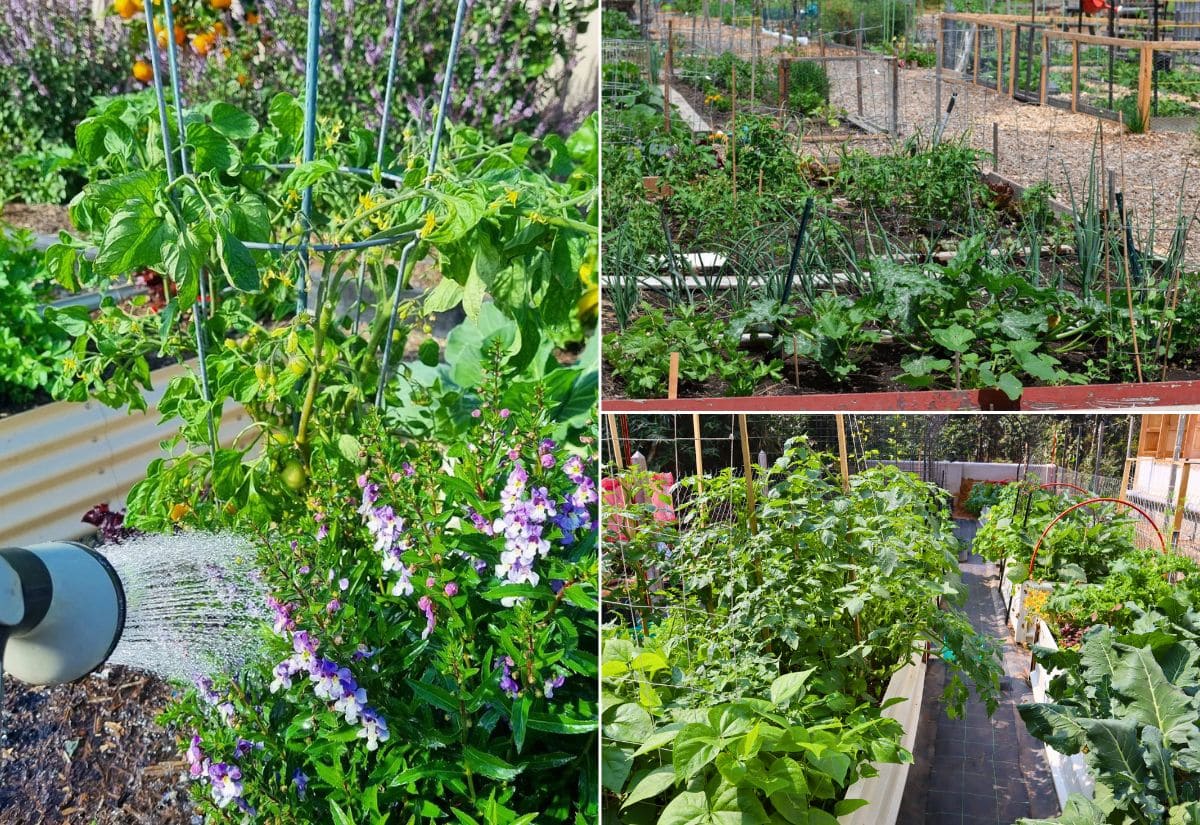
Ever wonder why your carrots are more twisted than a mystery novel, or why your tomatoes are looking a little less vibrant than the ones in those glossy magazine ads? Well, you’re not alone in the gardening blooper reel! Walking around allotments and peering over garden fences (with permission, of course!), it’s clear that the vegetable patch struggle is real—and it’s universal!
It’s as if we’re stuck in a loop, with the same old story of mismanaged spaces, misplaced plants, and a jumble of mismatched varieties. But hey, we’ve all had our fair share of gardening mishaps, haven’t we? It’s all part of the journey.
Now, don’t panic! I’m not here to scold you. Nah, I’m more of a problem-solver. I’ve done some detective work and compiled a list of 25 classic slip-ups that vegetable garden newbies tend to stumble into. Why not take a sneak peek and see if you’re accidentally committing a veggie crime? I promise, the solutions are easier than finding a ripe avocado at the supermarket (seriously, why is it so hard?).
You Have Packed Your Garden with Far Too Many Vegetables
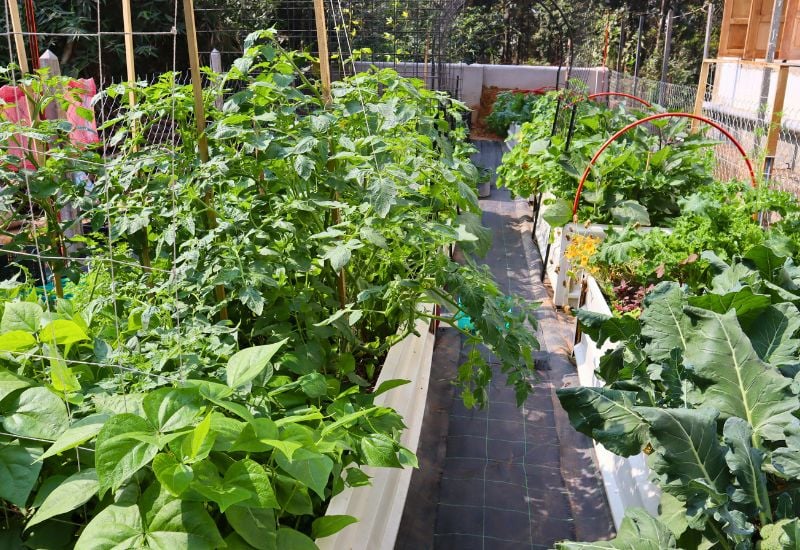
This is possibly the most common mistake of all, especially with small vegetable gardens and allotments: far too many plants! Then, they compete for space, and you cannot grow new plots that start later in the season.
Start filling your vegetable garden slowly next year, don’t pack it all up with spring crops!
For this year, don’t fill in all the beds as soon as you harvest them, so you will get some more space later on.
Overwatering Your Vegetable Garden
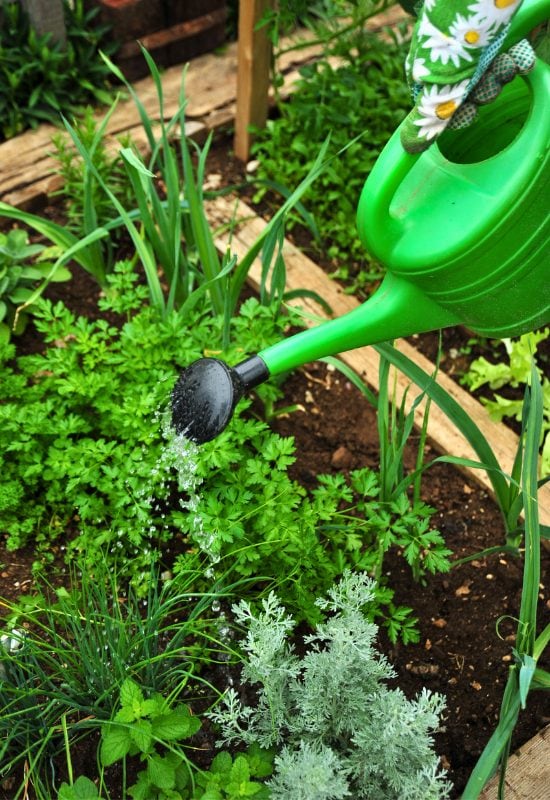
Another very common mistake is overwatering. Yes, your veggies need water, but they don’t need to drown in it! Too much of it brings disease, molds, fungi, pests and even rotting, and when it hits the roots, your crops are gone!
So, only water when the top soil is dry. Put your finger in the soil, and only if it is dry for at least 1 to 2 inches (2.5 to 5.0 cm), then irrigate.
Also, a vegetable garden in an average climate zone only needs 1 to 2 inches of water every week (2.5 to 5.0 cm). Don’t overdo it; once the soil is most, it’s fine!
Sunburnt Lettuce and Pale Peppers
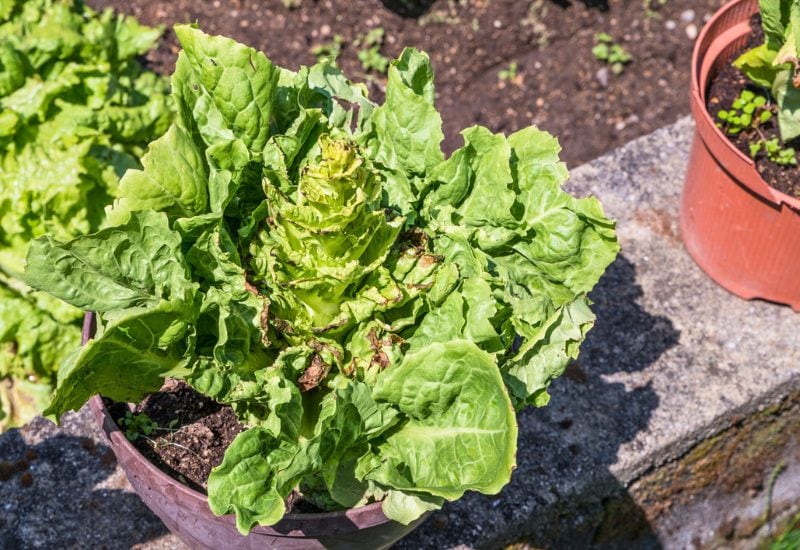
Where do you plant your peppers, your eggplants, your tomatoes? And where do you grow your lettuce, your fennel and your spinach? The first lot needs loads of sunlight, the second doesn’t! Instead, I often see peppers in a shady corner, and lettuce in full Sun!
So, plant Sun and heat loving vegetables towards the south (or east), and shade tolerant ones to the north…
Also, check out the shade of trees, walls and buildings nearby.
No Climbers in Small Vegetable Gardens
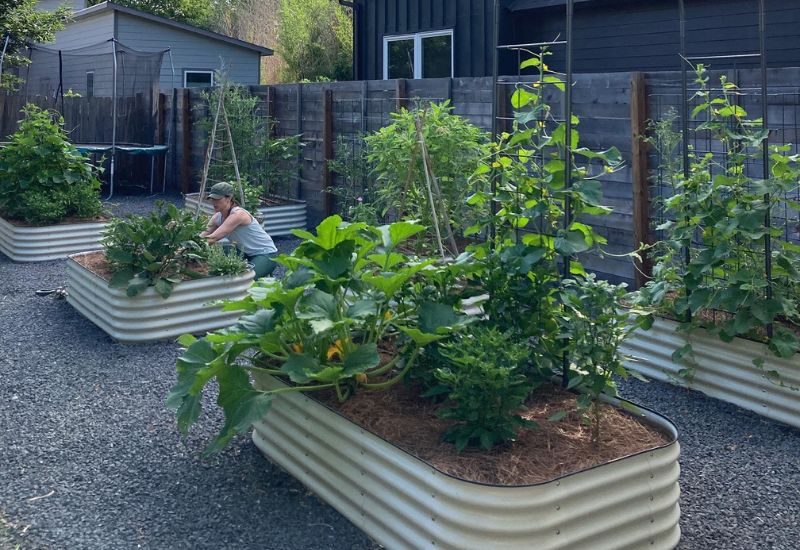
You have a small vegetable garden? Then grow up, with climbers, and you will get a bigger harvest for the same space! A tiny plot is good for peas, cucumbers, indeterminate tomatoes, not for pumpkins!
Vegetable Beds That Are Too Large!
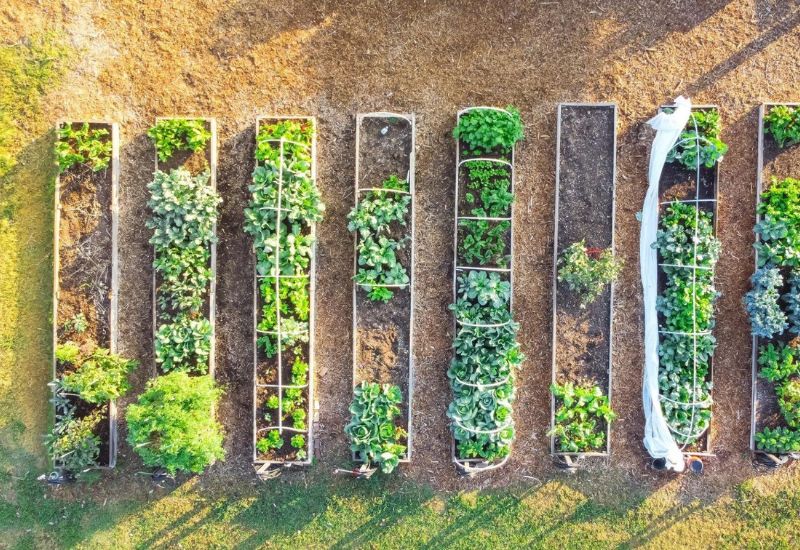
What is a vegetable bed for? To grow crops and plants so that you can reach all of them! You don’t want to step on the soil and compact it… So, you should have a passage between them that allows you to work and harvest without crushing your plants.
On average, a vegetable bed should be about 4 feet wide (1.2 meters), then, if you are very tall…
Not Mulching Your Garden
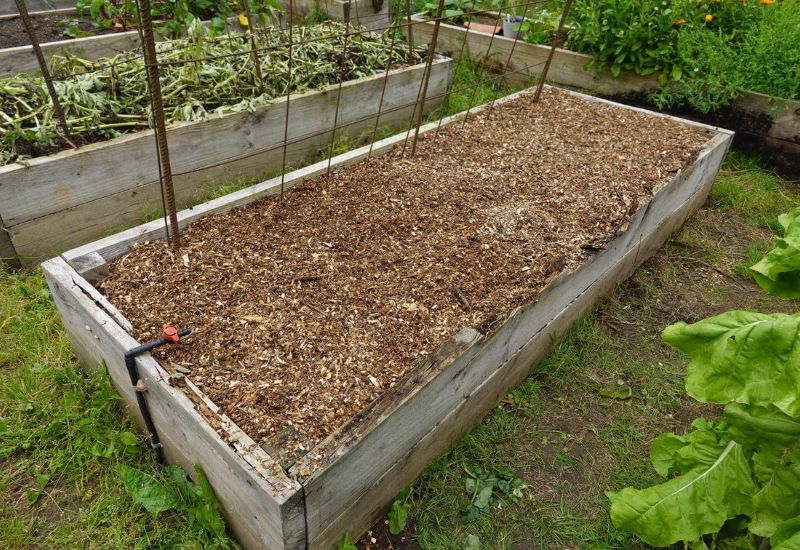
I see vegetable gardens filled with weeds, and others with barren soil. Which one’s better? The first, actually, because at least you don’t spend hours making your land dry and impoverished. But there’s a simple solution to both: mulch! Cheap straw or even cardboard or old newspapers are all fine if you want to save money, water and fertilizers!
Big Trees in Small Vegetable Gardens
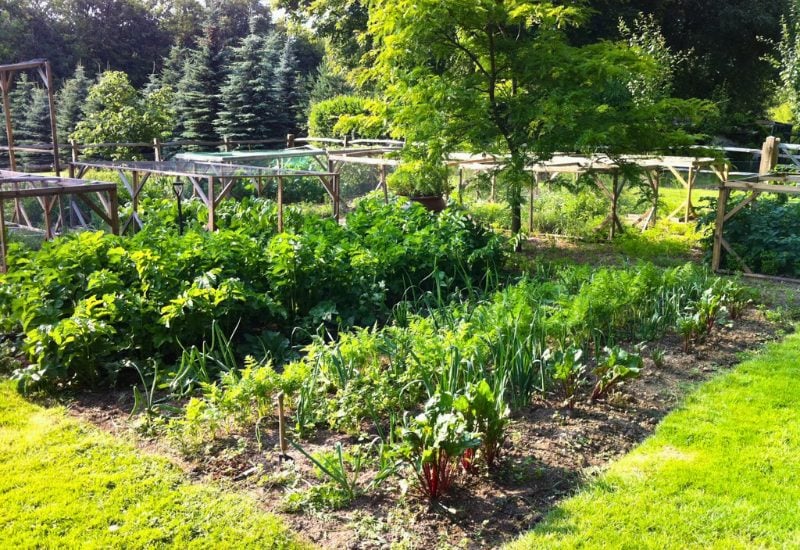
If you have a small plot of land, a big tree (even big bushes, like hazelnuts), take up a lot of space and produce lots of shade! Grow small and even dwarf varieties instead, you will still get a decent fruit harvest for your family, but not at the expense of your veggies!
No or Bad Irrigation System
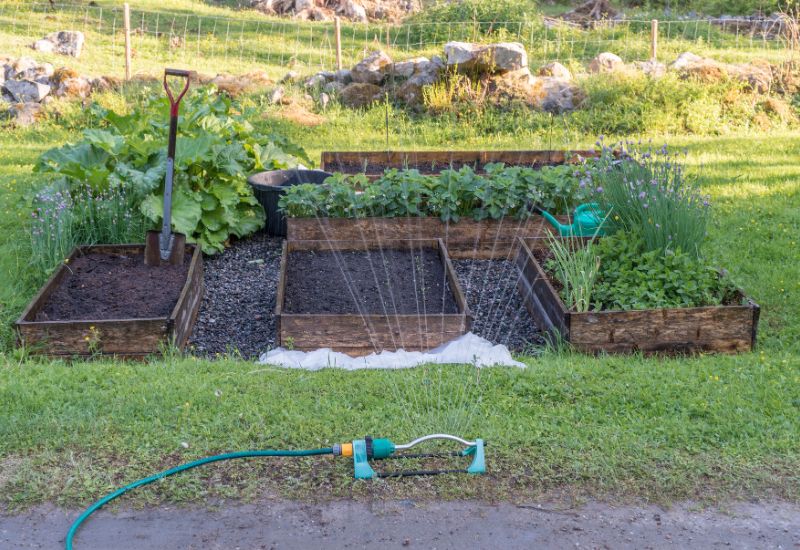
Ok, your vegetable patch may be small, and you can use a watering can, but you are still wasting water! The best, most efficient solution is a drip irrigation system, not sprinklers! Cheap and flexible hoses adapt to all shapes and all land sizes, so, get one!
Where’s the Hedge?
Does your garden have a hedge? If now, grow one; and it is not “wasted space”! You can grow crops there too, like raspberries for short ones, or prickly pears in hot and dry places, hazelnuts give massive yields and of course, roses are beautiful, and their hips delicious and super nutritious!
No Winter Crops
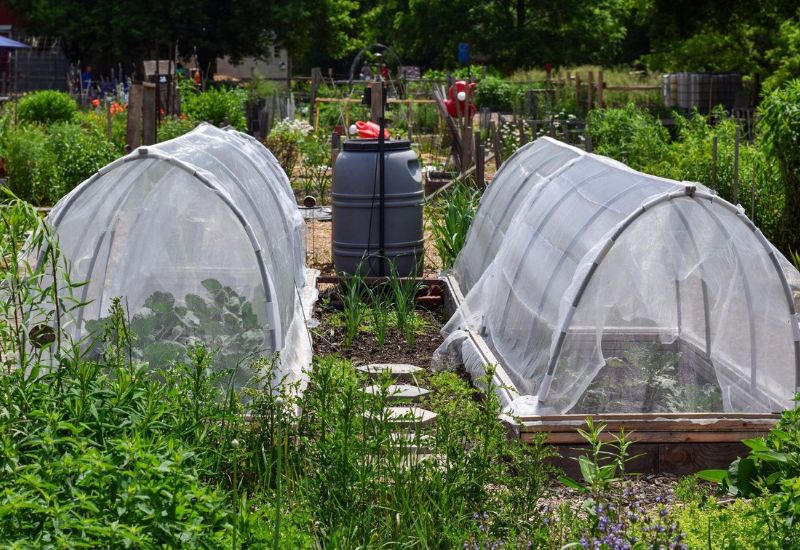
You walk around and see that vegetable gardens are often wastelands in winter. What a waste of space and time! Grow winter crops instead, and you can get or build a cheap polytunnel if the climate is harsh. Cabbages, kale, broccoli artichokes etc., can all end up on your dinner table.
No Flowers
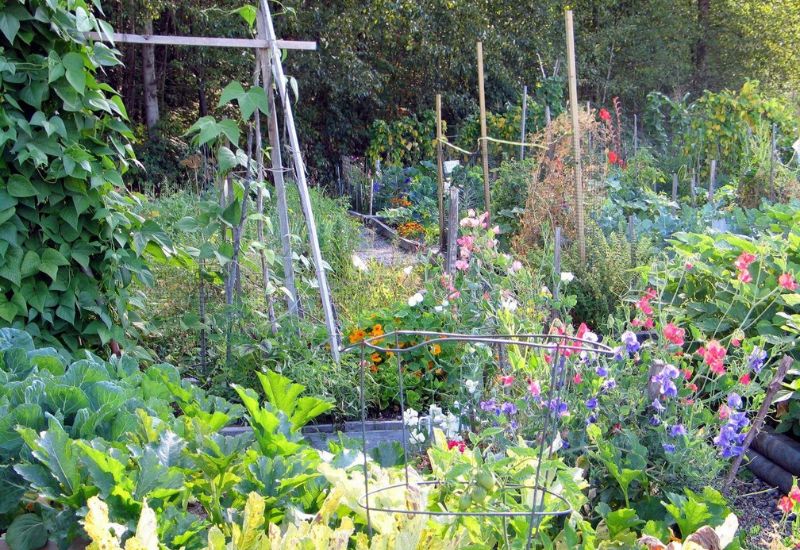
Ok, you want tomatoes, onions and potatoes from your vegetable garden, and not necessarily blossoms. But flowers attract pollinators, and they will help you increase your crop production! What is more, they also attract pest predators and some like marigold (Tagetes spp.) also keep bad bugs away!
So, mix your productive plants with well chosen decorative ones, and you will get the best of both worlds.
Where’s the Tool Shed?
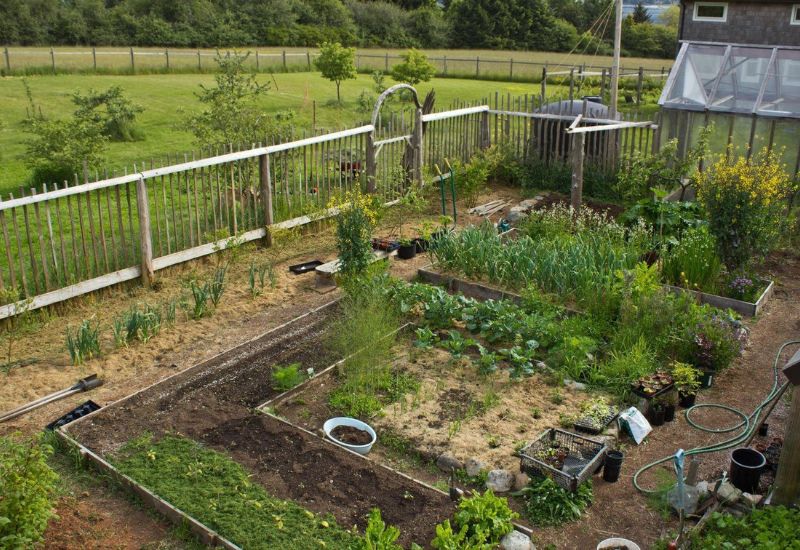
Small vegetable gardens often don’t have a tool shed, and some large ones have it in the wrong place!So, if you don’t have one, build one (a few planks and a makeshift roof will do), because your tools rust in the rain and in winter. And make it accessible! Think about it… Ideally it should have a central place, so you walk less every time you go back and forth, not far away from your vegetable beds.
Buckets and Wheelbarrow Stored Looking Up
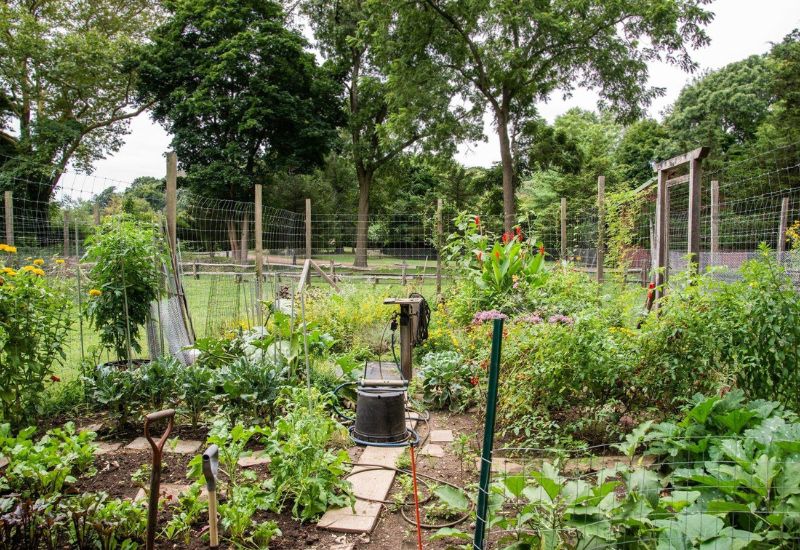
This is a small mistake, but very common, and it’s really bad especially in winter and if you live in a wet and rainy region. Buckets and wheelbarrows are not there to collect water, and when you store them, you need to turn them with the opening down or to the side! Unless they are covered, that is. Otherwise, don’t complain about stagnant water, mosquitoes, pests, bad smells etc.
Wasting Space with Crops You Don’t Eat
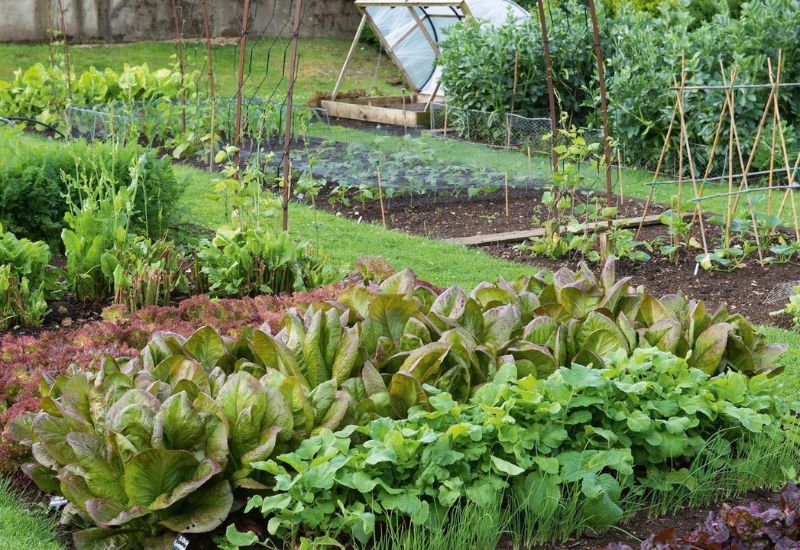
This is not a mistake I see in vegetable gardens; rather, I hear it a lot from gardeners… If you are not going to eat beetroot, why should you grow it? Well, you can do it as an experiment, but far too often, people get “charmed” by seeds and seedlings on display in nurseries, garden centers and also superstores, but then they regret it.
So, think about what vegetables you usually cook and eat, before growing them.
Too Much and Too Little
Similarly, many gardeners grow too much of a vegetable they use little, and too little of another crop they use a lot. This is very common, especially with beginners, and then we learn to work it out.
But if you are wise, work out how much of each vegetable you consume during the season, and only plant as much as you need.
Too Much for a Season
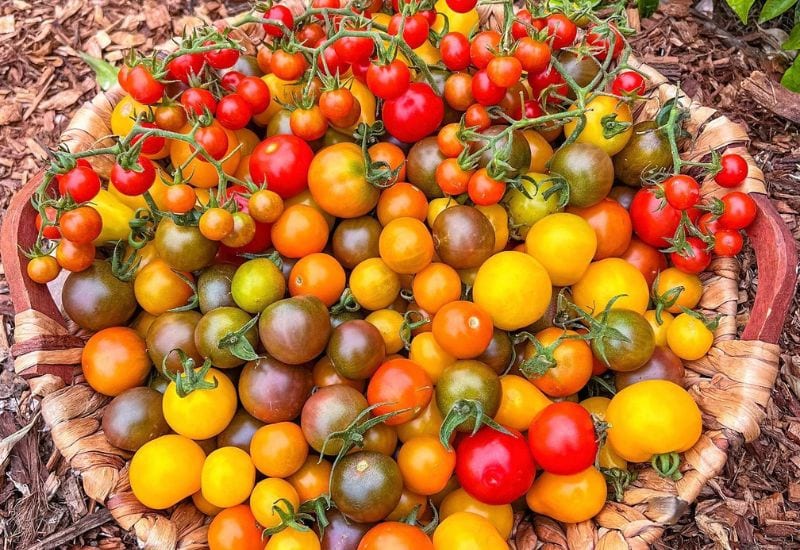
Still in theme, here is an extra tip for a similar mistake. When you count how many tomatoes you will need, don’t do it on a yearly basis! Now we eat all sorts of veggies and fruits all year round, but in your garden, they will only grow for a season!
Count how many plants of each vegetable to plant according to how much you eat when it’s in season, not all year round!
No Nitrogen-Fixing Plants
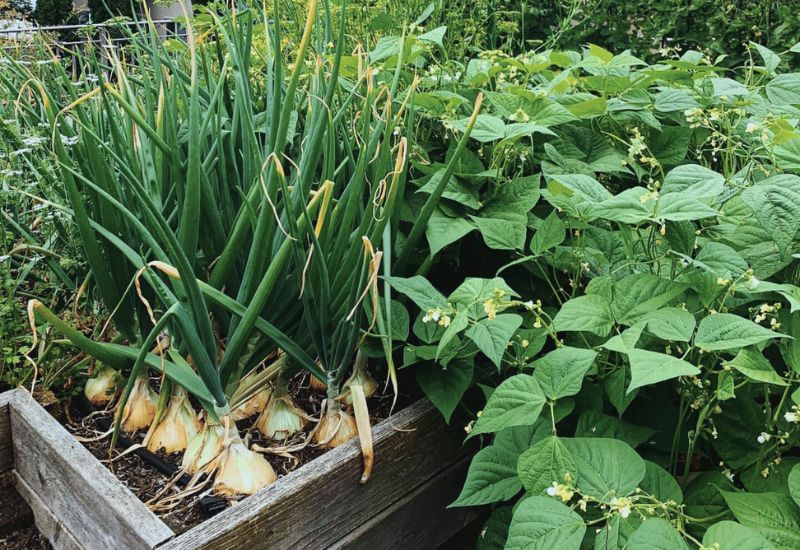
Crop rotation requires you to grow some nitrogen-fixing plants every year. But I often see Brassicaceae like broccoli and sprouts, Solanaceae like tomatoes and potatoes, leafy veggies like chard, but few peas, beans etc. Well, they do a wonderful job providing nitrogen while the other plants use it, so plant some!
Dry Soil and Underwatering
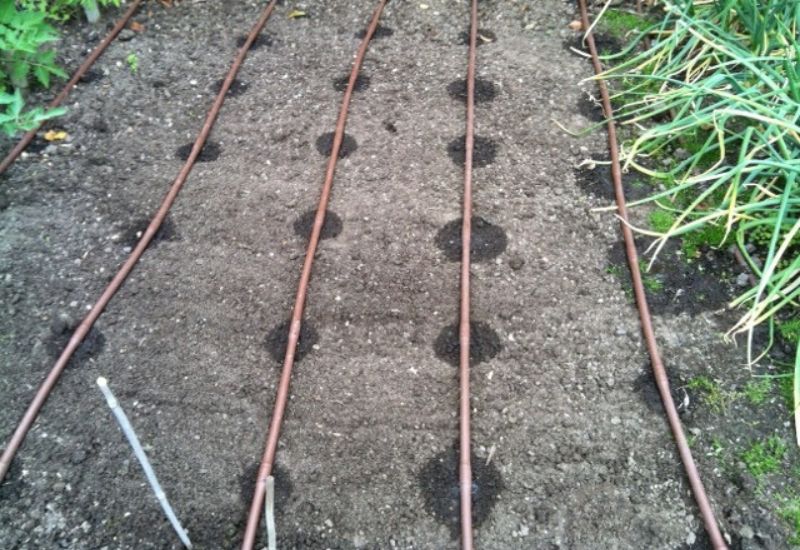
This often happens in summer, and sometimes it’s not your fault; you left for a holiday, or there’s a hose ban etc… But stock up on water for the hot season, use a drip irrigation system with a timer, if you don’t have friends or neighbors to look after your veggie patch while you are away (in exchange for fresh vegetables they can pick), and, again, remember to mulch (it will keep the soil more humid).
Raised Beds in Dry Countries
I am not talking about the modern concept of raised beds, but the “prototype”, those vegetable beds that are just about 6 or so inches higher than the paths, formed as simple mounds when digging. They are fine in humid regions, but they are a no-no in dry ones. What happens is that the water sinks through and it escapes to the sides. So, you get moist passages and veggies with dry feet…
In dry regions, you need to use sunken beds, so water and humidity can collect there!
And, on the contrary, you should use raised beds in humid areas, even the old fashioned “moundy” type.
Leafy Seedlings with No Protection from Hungry Mouths
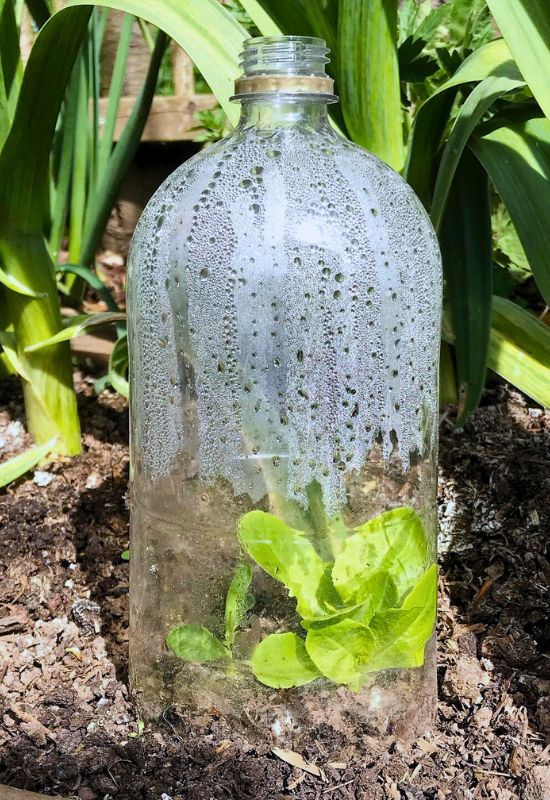
I often walk past a vegetable garden and I see newly planted saplings, especially of leafy veggies like lettuce and spinach, but with no protection from slugs, snails, birds, rabbits and all sorts of animals and insects that have a taste for fresh leaves… And do you know what I think? “There won’t be much left in two or three days…”
Always protect your tender saplings as soon as you plant them! You can use nets, cellophane sheets, cut plastic bottles, anything, really, but believe me, these hungry animals will find your saplings very fast indeed!
Wrong Plants for the Soil Type
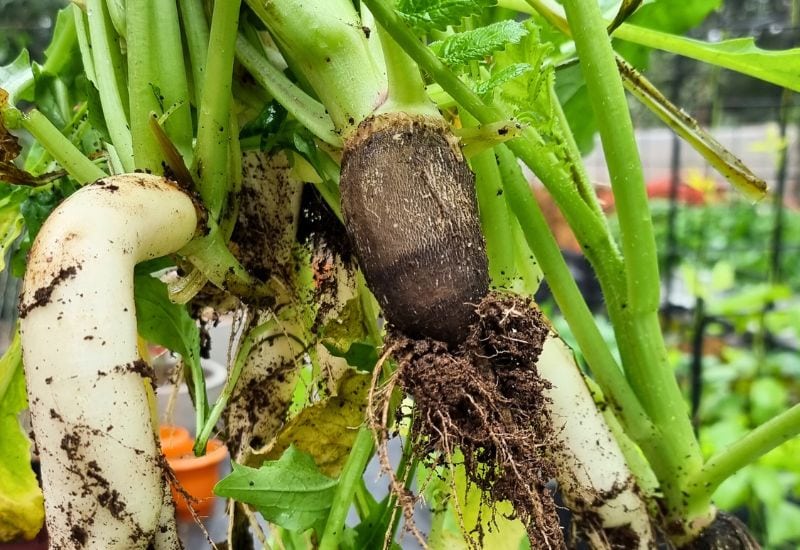
No matter how much you work on them, if you plant veggies (and decorative varieties too), in the wrong soil, they will not do well, if they survive at all.
So, you need to know your soil pH and composition before you choose which veggies to grow.
Get a pH meter and measure your soil’s acidity level. And that’s easy.
To find out your soil composition, get a big glass jar, scoop some soil to fill it to about half. Pour in water and shake well. Then let it rest.
Sand will fall to the bottom, then you will have a layer of silt, and then clay on top, in different colors, so you can measure them. “And organic matter?” you may ask… It floats on the water…
Seedlings Planted Too Early
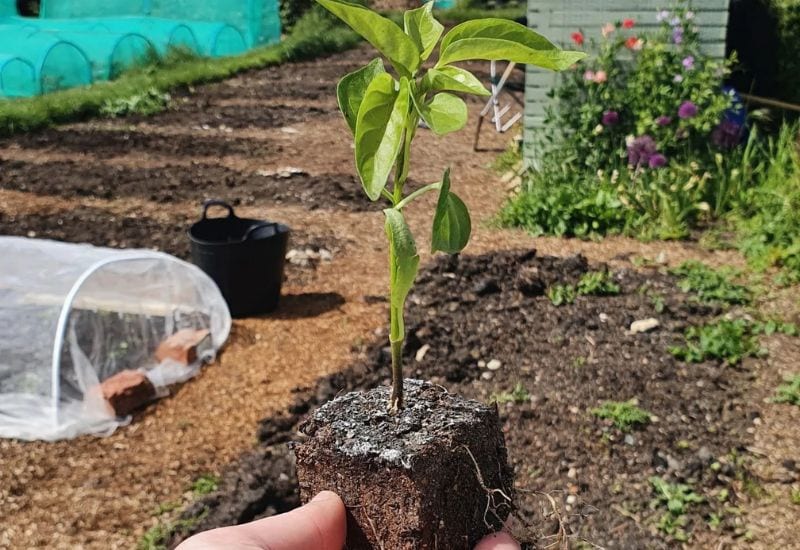
An eager gardener is not necessarily a good gardener. In fact, your excitement to plant your seedlings may lead you into a big mistake: timing it wrong. If you transplant them too early, they risk dying, and in any case, they won’t do well.
This is often due to a mistake: we take air, or even ground temperature as a yardstick. No, instead, you need to use soil temperature, or their roots may be too cold.
This is simply solved though, get a soil thermometer, they are very cheap and easy to use.
Where’s Your Shady Spot?
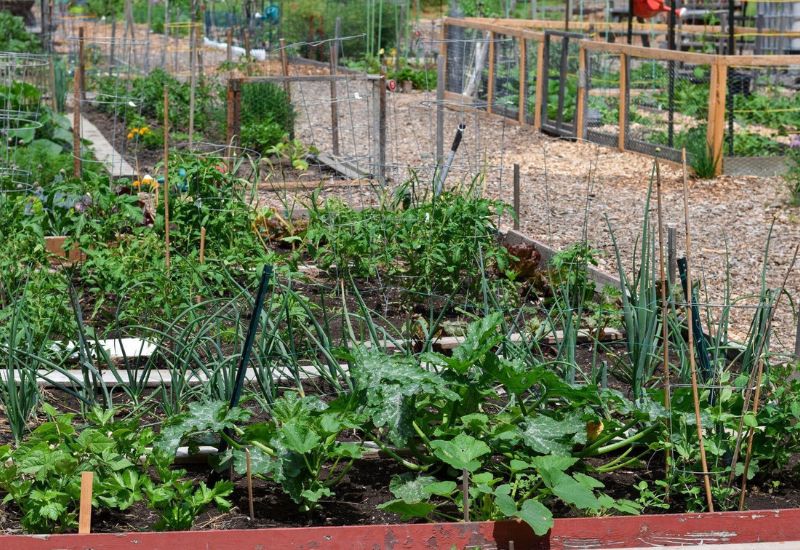
I know, we want as much sunlight as possible in our vegetable gardens, but what happens when days get too hot? You need a shady spot to take a break, and, if you don’t have a tree, a little roof will do, or even some shading nets, but get one!
Don’t Mix Those Vegetables!
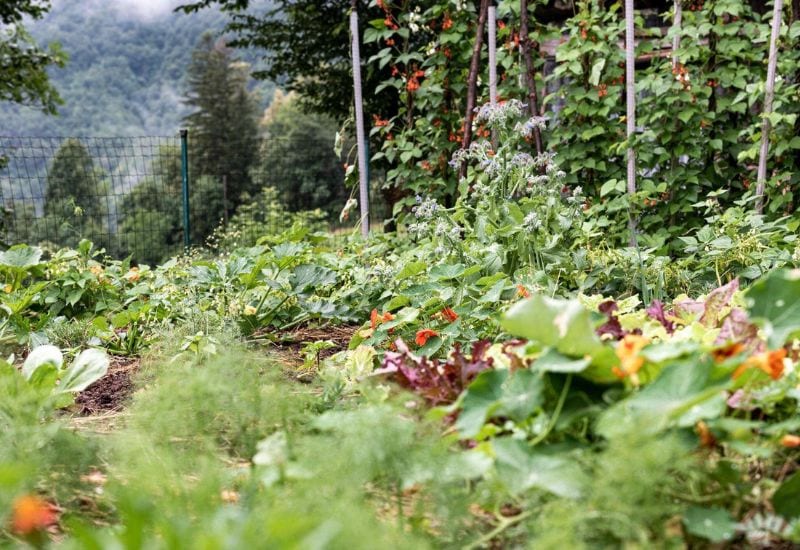
You want to save space and you want to use companion planting, and it’s a great idea. But you must know which vegetables grow well together. Otherwise, they may compete for space, light, water and nutrients.
What’s more, there are allelopathic plants, so called because they produce biochemicals that slow down the germination and growth of other varieties. And the biggest bully is… the fennel! Keep it far from your other veggies!
Are You Watering at This Time of the Day?
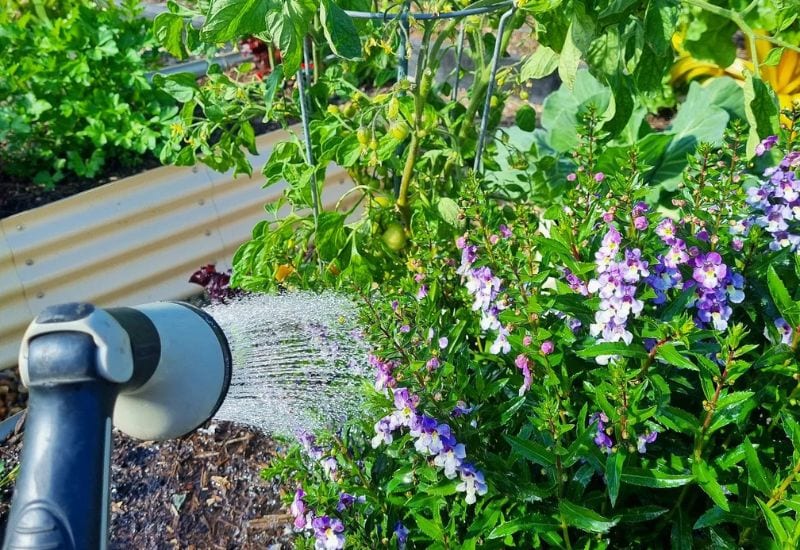
“Yes, it’s hot!” you may answer. And it is the wrong answer! Far too often do I see amateur and inexperienced gardeners watering their veggies in the afternoon, and you what happens? You lose lots of it through evaporation. And you can also give your plants a little shock if the water is cold.
The best time to water is in the evening, and, in exceptional cases (when you forgot, or if it’s an exceptionally hot day) as early in the morning as possible. This way, it will stay in the soil…
We Learn from Our Mistakes We all make mistakes when we start growing veggies, I did too when I was “green”. Don’t worry though, nothing is without a solution. So, now, get a pencil, a piece of paper, and take a walk to your vegetable garden, and check which errors you are making, and apply the solution!

Written By
Amber Noyes
Amber Noyes was born and raised in a suburban California town, San Mateo. She holds a master’s degree in horticulture from the University of California as well as a BS in Biology from the University of San Francisco. With experience working on an organic farm, water conservation research, farmers’ markets, and plant nursery, she understands what makes plants thrive and how we can better understand the connection between microclimate and plant health. When she’s not on the land, Amber loves informing people of new ideas/things related to gardening, especially organic gardening, houseplants, and growing plants in a small space.
